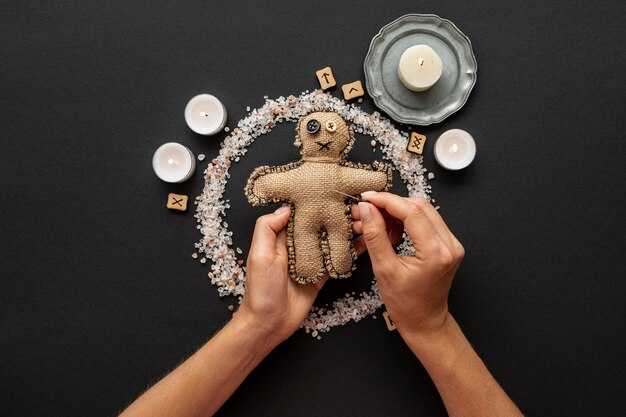Nobody can truly love you well if you haven’t become aware of the repeating patterns you keep slipping into. Consider this: have you ever been in a relationship where one week they message you every morning, make plans, and treat you like the center of their world, and the next week they grow distant? You find yourself staring at your phone, wondering whether you said something wrong, pushed too hard, or simply weren’t enough. This familiar back-and-forth — the push–pull cycle — is a common pattern: one person reaches out, the other withdraws, you increase your efforts, and they pull away even further. It’s exhausting, and if this rings true for you, it’s likely because you’ve lived it.
Here’s an important point: it’s not always about you. Often, it has nothing to do with your lovability or worth. Frequently, the person across from you operates from what’s called avoidant attachment — a deep-seated fear of being truly seen in love. They might crave connection, yet the instant they feel emotionally exposed their defensive systems switch on.
Now imagine there are six unconscious fantasies that attract avoidant partners. If you learn what they are — not to fake them or manipulate, but to genuinely embody them — you can stop the relentless chasing and begin cultivating a relationship where they choose to stay. Over the next 30 minutes you’ll be walked through each of these six fantasies; by the end you’ll understand them and know how to protect your own sense of self while engaging with them.
To set the scene: if you’ve been trapped in that push–pull dynamic, here’s what matters. Avoidant attachment isn’t a sign that someone doesn’t like you enough; it’s a survival strategy they developed long ago. Avoidant attachment is one of the central patterns identified in attachment theory, originally described by John Bowlby and explored further by Mary Ainsworth. At its core, it’s a protective mechanism. Crucially, the issue isn’t a fear of love itself but a fear of being seen within love.
Why does this happen? For many avoidants, early relationships taught them that emotions were dangerous territory. Maybe they grew up in a household where showing sadness was met with “don’t cry, be strong,” where asking for comfort was dismissed, or worse, punished. Picture a small child who’s hurt or afraid, only to have the people they depend on signal that their feelings are a problem. Unable to change those caregivers, the child adapts: they stop seeking comfort and begin to hide their needs — not because those needs aren’t there, but because revealing them feels unsafe.
Fast forward to adulthood and you have someone who still experiences the full spectrum of emotions; they’ve just learned to lock them away. They present as calm and self-contained even when, beneath the surface, they feel overwhelmed or lonely. This is where relationships become complicated. The avoidance system is designed to shield them from emotional flooding, so when another person approaches with open vulnerability, the avoidant’s protection kicks in and they instinctively distance themselves, fueling the very push–pull cycle that leaves both partners drained.
Close intimacy can set off an old warning system in some people—not because they dislike you, but because their nervous system has learned to equate closeness with threat. This is why avoidant individuals are often attracted to partners who radiate emotional safety: not clingy, not overwhelming, people who maintain their own calm center. Important point: avoidant people are not unemotional automatons. They tend to be acutely attuned to the room’s emotional atmosphere. They sense subtle shifts in mood, tone, and energy, detecting anxiety or pressure almost immediately. Their usual reaction is to pull back, create distance, and buy time to restore their inner balance. Yet here’s the contradiction: these same people long for deep, secure, lasting connection. They want to be seen for who they are beyond the surface—but they want that closeness without feeling trapped or solely responsible for another person’s emotional life. Understanding the six unconscious fantasies that draw them changes everything. You stop the chasing, stop over-explaining, stop trying to persuade them to stay. Instead, you become the kind of presence they can approach without dread.
Now, the first of these fantasies lays the groundwork for all the rest: the emotionally self-sufficient partner. This is not about putting up walls or pretending indifference—it’s not the manipulative “ignore until they miss me” routine, which avoidants detect immediately. It’s genuine self-reliance: someone rooted in themselves, able to be alone without panic, someone who doesn’t fall apart when the avoidant takes space. That steadiness is magnetic. For an avoidant, a core fear in relationships is being held responsible for someone else’s emotional state. Many grew up feeling pressured to keep the peace, meet expectations, or hide their own needs to avoid upsetting caretakers. So meeting someone who clearly handles their own inner life feels like arriving at a safe harbor—no guilt, no emotional landmines, no pressure. Picture this: they go quiet for a few days. You notice, but you still go to the gym, keep plans with friends, eat and sleep, and don’t send a barrage of texts demanding answers. Your energy communicates, “I care about you, but I won’t lose myself to keep you close.” That’s the difference. You’re not punishing them or withdrawing in revenge; you’re grounded. Paradoxically, by not chasing, you create conditions that make them more likely to come forward, because being with you becomes a voluntary, welcomed choice instead of a duty.
Of course, genuine self-sufficiency isn’t easy—especially for someone who tends toward anxiety in relationships. It requires practice and a life that nourishes you outside the relationship: hobbies, friendships, goals—real sources of fulfillment. If you claim calm while your energy broadcasts panic, an avoidant will feel it and retreat. Authenticity matters. When true emotional independence is present, the avoidant’s nervous system can relax; they no longer have to brace for being cast into the role of caretaker, regulator, or savior. They can simply be with you. This foundation is essential: without it, the other fantasies won’t hold, because an avoidant who’s busy protecting their freedom can’t explore deeper intimacy.
Next is the second fantasy that activates their curiosity and draws them nearer: the mysterious challenge. Once an avoidant senses safety—because you’re not chasing or forcing them to be responsible for your happiness—they don’t immediately fling open their heart. Instead, they become intrigued. Avoidants distrust things that arrive too easily. If someone reveals every inner detail on day one, their avoidance radar starts to blink: why such rapid openness? Is there a catch? This suspicion isn’t arrogance; it’s conditioning. They were taught that closeness can carry hidden strings—pressure, control, emotional traps. So they’re attracted to people who have an inner life that isn’t fully disclosed at once: people who unfold gradually, layer by layer. This isn’t about playing games or cultivating artificial scarcity. True mystery arises from living a life with depth. It means having passions, ongoing projects, solid routines—a life that remains full whether the avoidant is present or not—and not offering all of it immediately because someone shows interest. The mysterious challenge accepts connection while still saying no when necessary: disagreeing respectfully, standing by values, not rearranging everything to make another person comfortable. That stance earns respect. Avoidants fear losing themselves in relationships; meeting someone who hasn’t lost themselves and won’t invites safety and engagement. The harder it is to fully know you at once, the more invested they become, because the relationship becomes exploration rather than a forced intimacy. Mystery, then, is the natural outcome of depth rather than manipulative distancing. When embodied, it shifts the dynamic: instead of avoiding, they lean in to discover what you reveal over time.
The third fantasy emerges once curiosity is sparked: the non-judgmental witness. As an avoidant starts to move closer, they also move toward parts of themselves they’ve kept guarded. Old insecurities return—awkwardness around emotions, feelings of not being enough. The non-judgmental witness is someone who recognizes the avoidant’s truth without shaming or pressuring them to confess, without interpreting every hesitation as rejection. Avoidants often show love through deeds rather than declarations: remembering a favorite coffee, fixing a broken hinge, sitting quietly beside someone who’s upset. If judged for not expressing love “correctly,” their defenses slam shut. A non-judgmental witness does not sugarcoat—but interprets behavior through understanding: silence as self-preservation, taking space as regulation rather than punishment. That doesn’t mean tolerating disrespect; it means holding both boundaries and compassion simultaneously. Imagine instead of firing off “Why are you ignoring me?” you respond—aloud or internally—with, “I see you. You need this space, and I won’t abandon myself while giving it.” That stance is rare and therefore powerful. Most people either escalate the pressure, making the avoidant run, or they leave entirely, confirming the avoidant’s belief that closeness equals loss. Standing calm, present, and non-demanding creates a form of connection the avoidant may never have experienced: being close without performance. That experience can shift their belief system and lead them to crave stability.
Which brings the fourth fantasy: the secure base. When an avoidant discovers that they can be with someone without judgment or entrapment, they can finally exhale—and a desire for a dependable anchor arises. A secure base is not someone who chases or clings whenever the avoidant withdraws. It is not a person who punishes withdrawal with coldness. Rather, it is steady, reliable, and rooted: someone who remains themselves regardless of the other’s emotional weather. Avoidants often test partners unconsciously—pulling back to see if the partner becomes inconsistent, collapses, or mirrors instability. When the partner remains grounded, kind, and self-respecting, the avoidant experiences a novel feeling: safety in the presence of another adult who won’t turn into chaos at the first discomfort. Picture being a refueling station in a barren emotional landscape: they can wander and return to calmness instead of interrogation. Being a secure base doesn’t mean passivity; it’s a high form of strength. It includes saying, “I care about you, but I also care about myself,” not shadowing every move, and resisting the urge to withdraw love when uncomfortable. Paradoxically, when presence is unconditional, the avoidant starts to choose return not out of obligation but desire. This is the stage where the avoidant begins to imagine staying and building side by side, which leads to the fifth fantasy.
The fifth unconscious fantasy is the equal partner—and it’s the one that earns respect, desire, and the sense that this could be a long-term partnership. Once the avoidant sees that the relationship isn’t a one-sided effort—that the other person stands firm too—that changes the emotional calculus. Avoidants dread becoming someone’s entire world, carrying another person’s identity, hopes, and happiness alone. Meeting a person who is whole in themselves—someone with a career, interests, friendships, a life protected and cultivated—alters everything. An equal partner doesn’t orbit the avoidant. You have your own center of gravity and defend it. You can love deeply without losing your selfhood. That matters because it lets the avoidant see that loving you won’t mean surrendering themselves. The relationship becomes a choice rather than a demand. Being an equal means tolerating independence without jealousy: if they work late, you don’t spiral; if they pursue a goal, you support rather than compete. You don’t assess your worth by their texts or play games about who cares more. You’re there because you choose to be. This is magnetic: it reframes closeness from trap to potential for shared growth. When they admire you as an equal, it awakens a part of them buried under years of self-protection—the desire to develop, to stop pretending indestructibility just to survive, to stop controlling everything to avoid being hurt. Seeing you as someone to stand beside invites them to want to be better—not from obligation but from choice. That shift from self-preservation to joint growth sets the scene for the final and most freeing fantasy.
The sixth and last fantasy transforms love from confinement into adventure: the adventure companion. When an avoidant has experienced you in the previous five ways—emotionally self-sufficient, intriguingly mysterious, non-judgmental, reliably grounded, and equal—an extraordinary thing can happen: love stops feeling like a burden and begins to feel like freedom. The adventure companion isn’t merely a travel partner or a source of Instagram moments (though it can include those things). It’s someone who brings vitality, curiosity, and shared experiences into the relationship without turning every activity into a test of emotional depth. Avoidants don’t want every dinner to become an interrogation about the future or every trip scored on how emotionally close they felt. What they often want—sometimes more than they’ll admit—is a partner who moves through life with them in a way that feels alive rather than heavy. The adventure companion says yes to trying new things together: hiking, cooking classes, exploring a city, or wandering a bookstore—being present in the moment rather than using experiences as measures of relationship worth. This energy is light without being shallow: fully engaged in life, with or without the avoidant, and able to deepen shared moments. That quality is intoxicating to an avoidant because it replaces the old equation—closeness equals loss—with a new one—closeness equals greater freedom to live fully. When love stops feeling like a cage, escaping is no longer necessary. Joy without strings and connection without constant emotional processing create a commitment that breathes easily rather than being held breathlessly. When avoidants find this, many who spent their lives keeping an exit open stop searching for a way out and start looking for reasons to stay.
So, rather than chasing an avoidant, build yourself into someone who naturally embodies these six roles—not to manipulate but because living this way makes you feel more alive, rooted, and free. Importantly, these fantasies aren’t only about what avoidants want; they describe foundations of healthy love for anyone. The six unconscious draws are: the emotionally self-sufficient partner, the mysterious challenge, the non-judgmental witness, the secure base, the equal partner, and the adventure companion. A critical truth: these are not tactics to fool someone. If they are faked, avoidants will sense the inauthenticity—having scanned emotional landscapes since childhood, they can detect when a calm exterior masks inner panic. This isn’t a playbook for getting someone to stay. It’s a path of personal development. Become someone who is grounded, self-led, and comfortable in their own skin so that anyone—avoidant or not—feels safe and inspired in your presence. When emotional independence is real, your mood no longer hinges on another person’s actions. When mystery is honored, depth and privacy are safeguarded. When witness is offered without judgment, safety is given without betraying yourself. As a secure base, remain steady through storms. As an equal partner, walk beside rather than behind or ahead. As an adventure companion, enlarge life rather than shrink it. Paradoxically, embodying these qualities authentically means you’re not chasing anyone because you don’t need them to complete you—you are already whole. That shift flips the dynamic: the avoidant who once fled from entanglement senses they can be close without being consumed, and that is powerfully attractive. Even if an avoidant ultimately chooses not to stay, you still win, because you’ve developed a version of yourself who can enter any relationship without fear, without over-giving, and without losing personal integrity. The larger point is this: become these six fantasies not to fix someone else but because they bring out your strongest self. Living from that place turns love from a tug-of-war into a meeting of equals.
In summary, the six unconscious fantasies that draw avoidant partners are: the emotionally self-sufficient partner, the mysterious challenge, the non-judgmental witness, the secure base, the equal partner, and the adventure companion. But remember: this was never only about them. When you choose to become this person—not to win someone back or prove worth, but because you deserve steadiness, wholeness, and aliveness—you transform your experience of love. Avoidants are drawn to authenticity. The moment you stop trying to earn love and begin living according to your intrinsic value, the dynamic changes. You no longer wait on a text to feel whole, adjust yourself to keep others comfortable, or live in fear of losing someone because you have already found yourself. When that happens, two outcomes are possible: the avoidant recognizes the safety, respect, and freedom and leans toward you; or they don’t. Either way, you have won—because the aim isn’t to hold someone who cannot meet you, but to stand so firmly in who you are that you attract people who will meet you there. Becoming these six fantasies is not performance; it is transformation. Build real self-sufficiency, cultivate genuine depth, live with curiosity and joy, witness without betraying your boundaries—stop pulling, and love will stop being a struggle. Stand openly in your wholeness, and the right people won’t just stay; they will choose you every single day.


 The 6 Fantasies That Make Avoidants Fall in Love | Best Motivational Speech">
The 6 Fantasies That Make Avoidants Fall in Love | Best Motivational Speech">

 The Final Cruel Trick Avoidants Use Once You Stop Caring (It Cuts Deep)">
The Final Cruel Trick Avoidants Use Once You Stop Caring (It Cuts Deep)">
 These are People Pleaser Problems">
These are People Pleaser Problems">
 How do you know when it’s time to walk away…">
How do you know when it’s time to walk away…">
 "Relationships Die in the Conversations that Never happen"">
"Relationships Die in the Conversations that Never happen"">
 They Always Come Back: The 3 Avoidant Stages No One Talks About | Mel Robbins motivational speech">
They Always Come Back: The 3 Avoidant Stages No One Talks About | Mel Robbins motivational speech">
 Guaranteed way to make Women Angry.">
Guaranteed way to make Women Angry.">
 How People Pleasers Fight">
How People Pleasers Fight">
 Are Men the Enemy">
Are Men the Enemy">
 How to Escape Emotional Manipulation Before It’s Too Late">
How to Escape Emotional Manipulation Before It’s Too Late">
 5 Signs An Avoidant Is Secretly Testing You When They Want You in Their Life.">
5 Signs An Avoidant Is Secretly Testing You When They Want You in Their Life.">